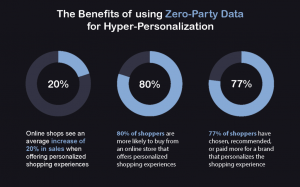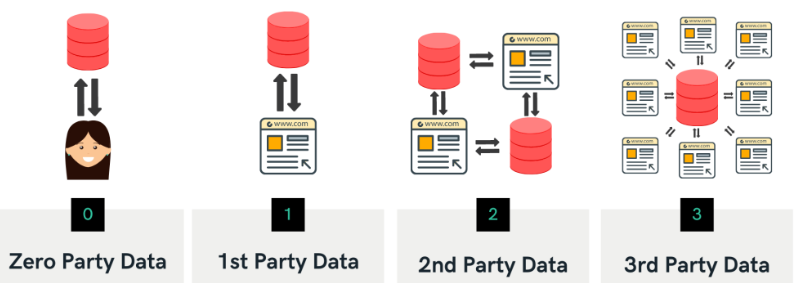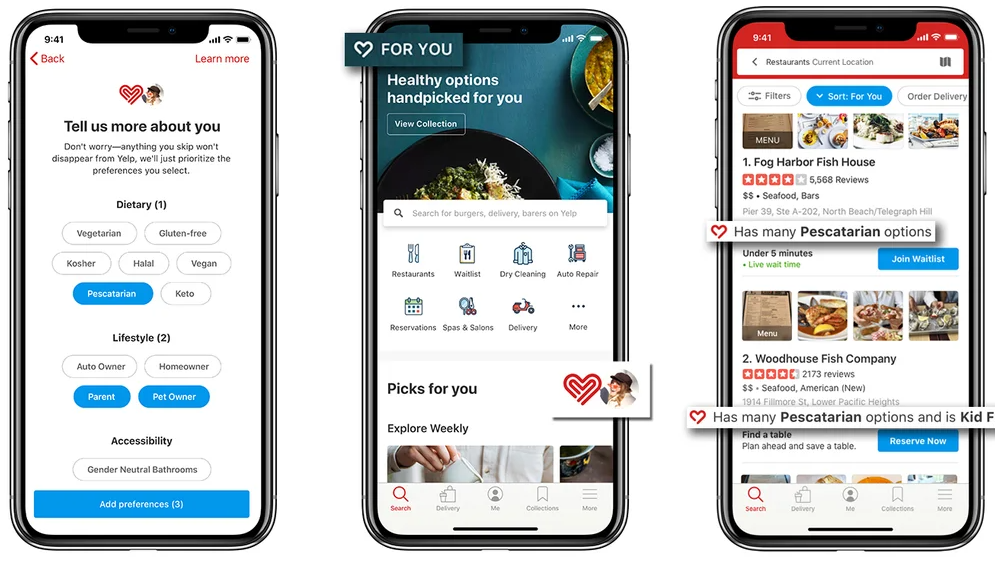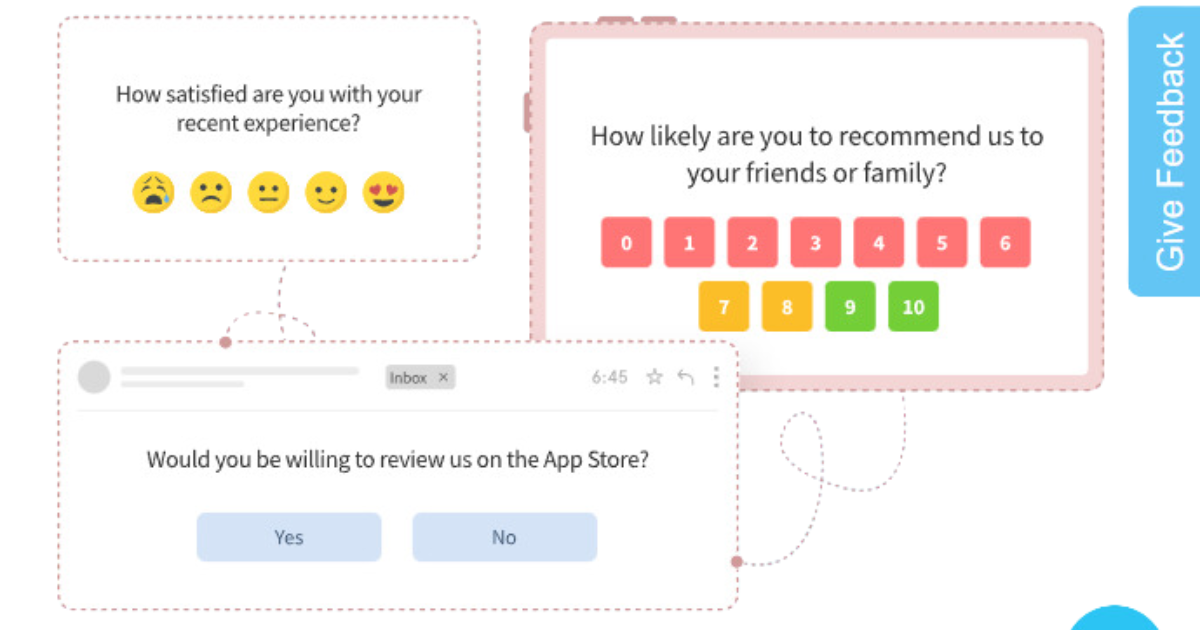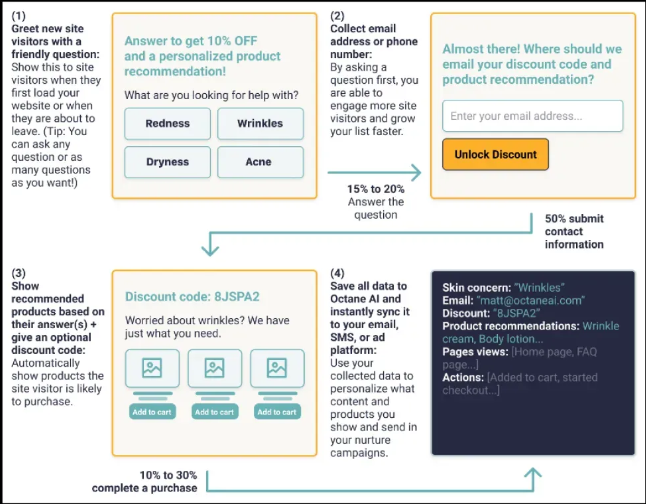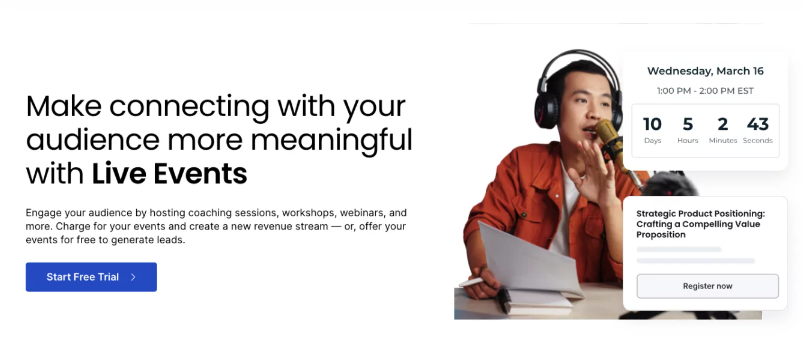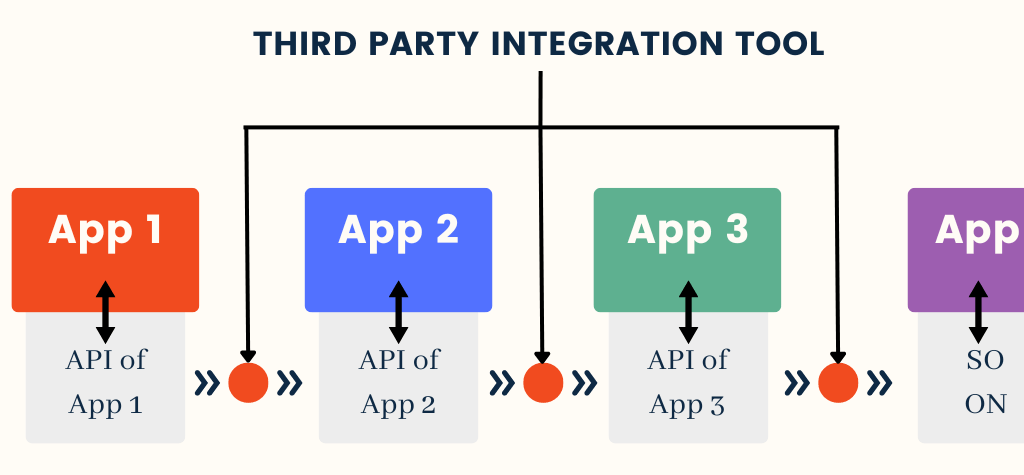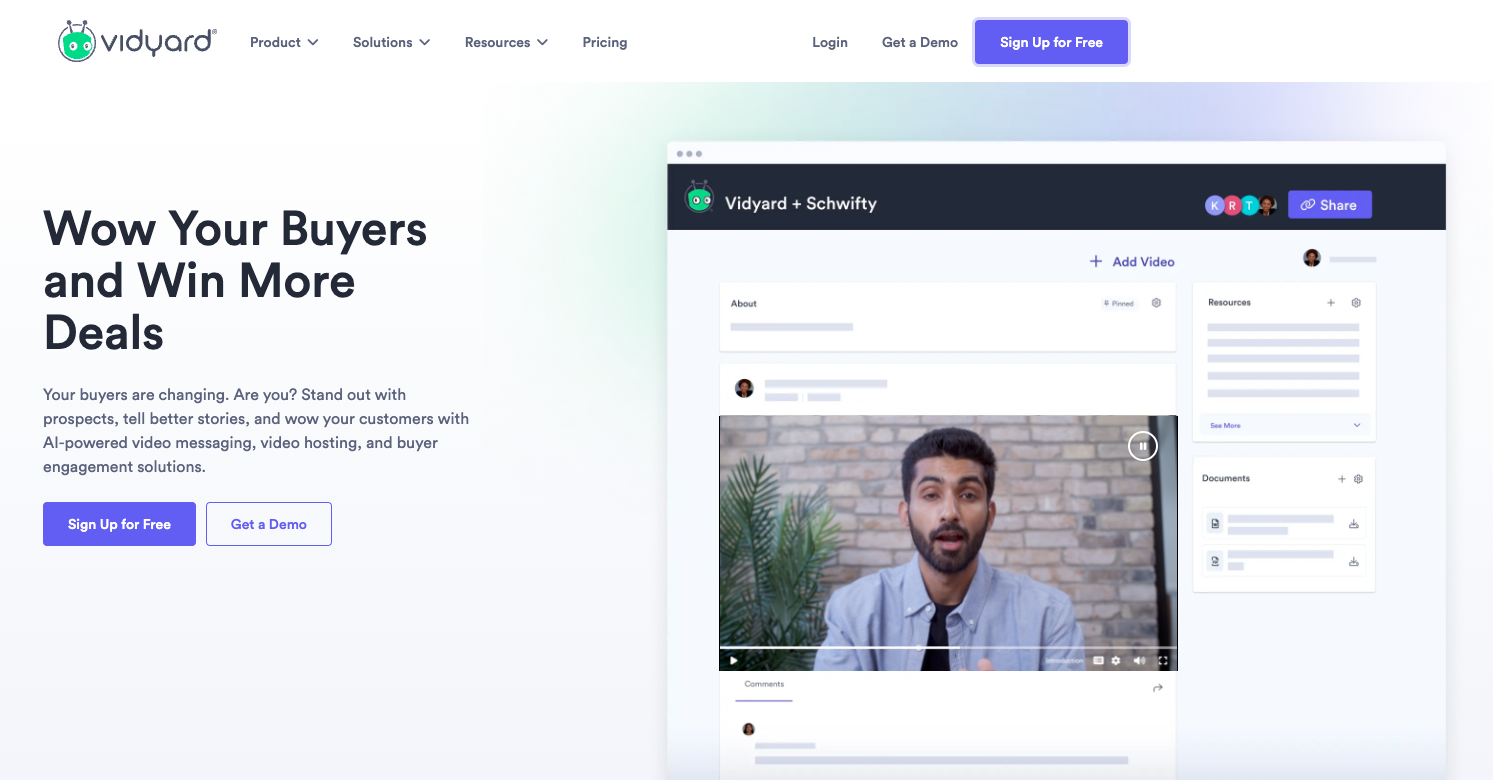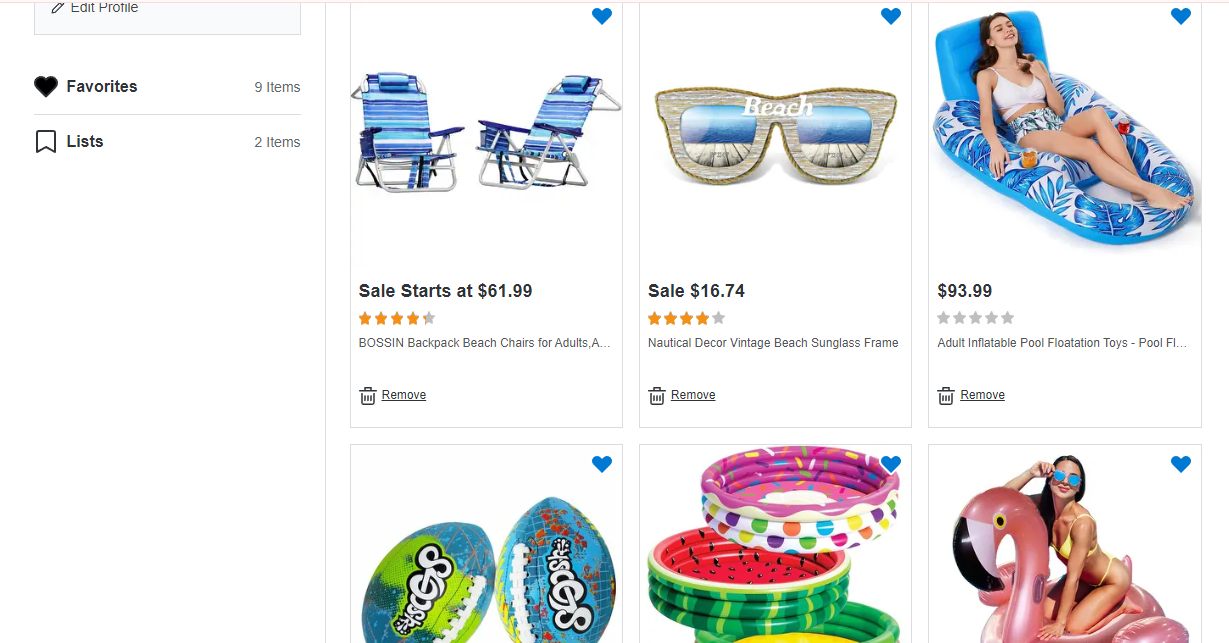Zero-Party Data: Definition, Importance, And Examples To Learn From
Brands lose up to $756 billion annually because they don’t personalize their services. Zero-party data can help you fix that. If you’re here to learn how to ditch the guesswork to get to know what exactly your customers want, you’re in the right place.
In this guide, we’ll go over what zero-party data is, why it’s important, and how to collect it to boost your ROI by up to 8x your campaign spend. By the end, you will know how to future-proof your strategy to increase your checkout conversion rate by up to 30%.
Let’s get started.
What Is Zero-Party Data?
Zero party data refers to the firsthand information that customers willingly share with you. This means you’re not guessing their preferences—you’re hearing it directly from them. With 80% of shoppers who prefer personalized experiences, zero-party data lets you create hyper-personalized SMS or email marketing campaigns that drive up to a 20% sales increase.
So, what do you need to collect? Zero party data examples basically include:
- Demographics: Age, gender, location, and income
- Values: Feedback, quality vs price attitude, and customer satisfaction
- Behaviors: Purchase history, browsing patterns, and social media engagement
- Preferences: Interests, hobbies, lifestyle, and contact (ex. email and phone number)
Note: You don’t necessarily need to collect everything—from demographics to behaviors and preferences. Pick only the most relevant information based on your needs and what you want to know about your customers. This way, you will not annoy your customers or make them feel like you’re spamming them.
For example, if you’re a fashion retailer like Nordstrom, focus on your customers’ clothing preferences, sizes, and purchase history. But if you’re a sales outsourcing company, like Genius and Belkins, collect data on email open rates, company size, and follow-up responses.
Zero, 1st, 2nd, & 3rd Party Data: How Are They Different?
Unlike zero-party data, which customers give you directly, first-party data comes from your interactions with them. Second-party data is when you get info through a company partnership, while third-party is the data you collect from outside companies and can be less specific.
Here’s a handy guide that shows their key differences:
| Zero-Party Data | First Party Data | 2nd-Party Data | 3rd-Party Data | |
| What It Is | Data shared by customers | Data collected by the company | Data shared by trusted partners | Data collected by a third party |
| Relationship With The Customers | Direct – with consent | Direct – with consent | Indirect – with consent | Indirect – consent depends on whether the user allows it |
| Accuracy | Highly accurate | Highly accurate | Highly accurate but depends on partners | Not so accurate; variable |
| Shared | Not shared | Not shared | Shared between partners | Sold to multiple companies |
| Use Cases | Personal context about customer experiences | Analyze behavior & optimize marketing | Get insights through combined data sources | Gain market dynamics & target new segments |
| Examples | – Interests
– Feedback – Demographic – Product & communication preferences |
– Customer’s name, email, & phone
– Purchase intentions – Ticket support – Social media interactions |
– Website visits
– Survey responses – Customer lists – Demographics at the loyalty program |
– Demographic
– Spending habits – Browsing behavior – Audience segmentation |
Core Benefits Of Zero-Party Data
Zero-party data is inherently more accurate than other types of data as it comes directly from customers. You can gain more trust from customers who give their information explicitly rather than collect it through third-party cookies.
As data privacy laws like GDPR and CCPA become stricter, you can leverage zero party data to avoid legal risks since customers share the data. Since 2021, Apple blocked data aggregators and social media platforms like Facebook from collecting data from iPhones and iPads without user permissions, which make up about 25% of mobile devices in the world.
So, if you heavily rely on Facebook Ads or third-party data sources to track user activities (like purchases or sign-ups), it’s now time to switch and make the most of zero-party data to create more personal, trustworthy experiences for your customers. More often, they know exactly how their information is used and how they give it freely.
How To Collect Zero-Party Data: 9 Strategies + Examples
From the 9 strategies below, mark which ones you are already using and which are new to you. Learn from the examples we will give so you can easily collect the zero party data you need.
1. Create Quizzes & Surveys To Learn About What Your Users Like
66% of consumers are willing to share their data if it enhances their purchasing experiences. Quizzes and surveys are perfect for this because they let you gather data in a way that feels less invasive and more personal.
How To Do It
Keep your quiz and survey short and simple. Aim for 5-10 questions max, and make your questions clear with easy-to-understand icons or visuals to guide their choices. For example, if you’re in the health and wellness space, you can create a “Find My Diet Plan” quiz where customers give their dietary goals, like gluten-free meals (with images), to cope with their gluten sensitivity.
Once you have this information, use it to recommend personalized products or services, like gluten-free meal kits, supplements, or recipes. You can also use it to segment your audience based on their responses and improve your product offerings to align with their preferences and increase satisfaction.
2. Launch Polls & Feedback Forms To Capture User Opinions Faster
Polls and feedback forms are quick, low-effort ways to gather information about customer data preferences, opinions, or needs. With an average completion rate of 83% for 1-3 questions, they have high engagement rates that make it easier to improve your products, services, and overall customer experience.
How To Do It
Clearly outline what you want to know. Are you trying to understand customer satisfaction, product preferences, or marketing channel effectiveness? Once you figure it out, send polls and feedback forms right after the purchase.
Since their purchasing experience is still fresh, they can provide more accurate feedback about your products or services. If response rates are low, send them follow-up reminders. You can also include a question in your feedback form to know how they heard about your product so you can find out which marketing channels are most effective.
3. Implement Personalized Email Campaigns To Tailor Your Content
Personalized email campaigns have 29% higher open rates and 41% higher click-through rates than generic emails. This means that customers are more likely to give their consent through emails to personalize their preferences.
How To Do It
Know who you’re talking to. Tailor your emails to suit a 1-on-1 conversation, not a generic message blasted to everyone. Be sure to segment your audience into different groups based on their purchase history to make your campaign ultra-specific to their needs. Note that people are more likely to share their preferences if they get something in return.
So, once you have the leads, offer a little incentive on a customer data platform like Shopify. If you want to look for cool incentive ideas, ReConvert comes with a Shopify upsell app that offers checkout upsells, one-click upsells, and thank-you page upsells. This platform allows you to add a Shopify free gift for every customer that purchases from you.
If you now have zero-party data, don’t let it sit around. Adjust your future campaigns based on your email marketing KPIs and metrics to show that you’re listening to their preferences. If someone tells you they’re interested in a specific product, make sure your next email includes something relevant to that to satisfy their needs and build trust.
4. Host Webinars & Live Events To Get Instant Feedback & Questions
Collecting zero-party data using webinars or even through live podcasts is an effective way to get instant feedback from your audience. 73% of B2B marketers and sales experts say webinars are the best way to generate high-quality leads and real-time feedback.
How To Do It
You can start collecting data before the event even starts. When attendees sign up for your webinar, ask a few targeted questions, like what they hope to learn from the event, to get a quick insight into their preferences before they even join.
More than that, you can offer exclusive perks like a downloadable guide or post-event consultation session to encourage more participation.
Let’s take my favorite example, Pinch Med Spa’s Botox Party:
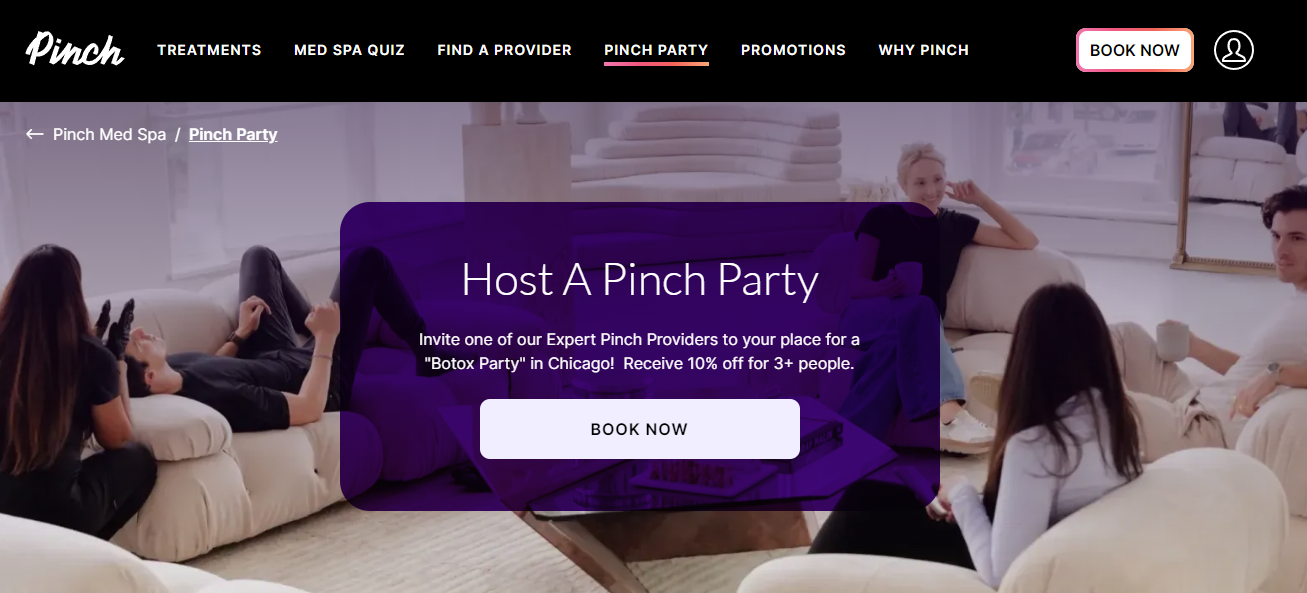
Pinch hosts this live event to create a fun, social setting where 2 or more friends come together to enjoy medical treatments like masseter tox and chemical peels to exfoliate skin at 10% off. They offer a booking treatment sheet based on the treatment plan you choose, and from there, they collect information from users to personalize their experiences.
Just like Pinch, you can use this strategy for a product launch or a workshop to collect more sign-ups and feedback. Just make sure to ask participants to rate their experience, share what they found most valuable, or suggest specific services in the future.
5. Use Gamification & Rewards Programs To Connect More With Users
47% of companies use gamification strategies to drive more visits and purchases. Aside from the quizzes we mentioned earlier, you can use interactive leaderboards and reward systems to gather your customers’ preferences, interests, and purchasing impulses while you engage with them in fun, immersive ways.
Here’s our top pick from Vitamart:
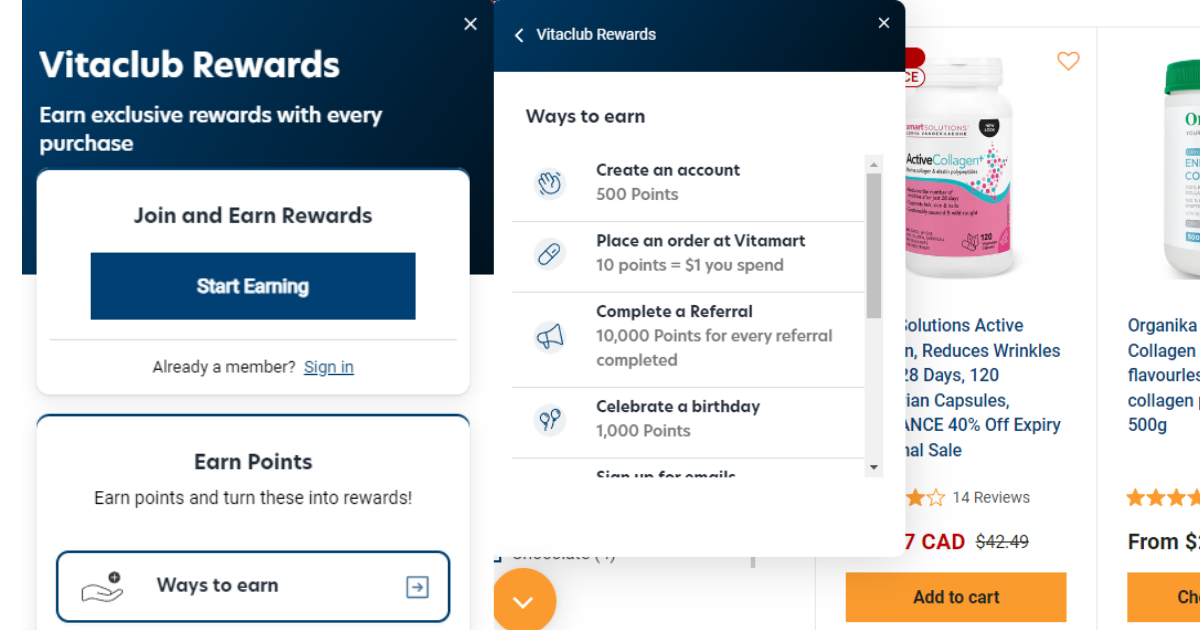
Vitamart makes it easy to get rewards while shopping. You can earn points when you sign up, buy, or refer friends. As you browse their products, like collagen supplements, you’ll see a handy dropdown that shows how you can rack up points. It’s a smooth way for them to get to know your preferences without you even thinking about it.
How To Do It
Analyze your customers’ behavior, preferences, and past interactions with your brand. Segment your audience into distinct groups based on purchase history, website activity, or expressed interests. This segmentation lets you tailor your gamified experiences and reward systems to their specific needs.
Once you segment your audience, design gamified solutions that resonate with each group. For example, if you’re in the healthcare industry, like Medical Alert Buyers Guide and Healthline, create a gamified health app where patients earn rewards for completing their exercises and attending check-ups and then make those rewards redeemable through discounts.
As users engage with these challenges, they’ll be prompted to share information about their preferences or interests, which serves as a valuable resource for your zero-party data.
6. Integrate With Other Apps & Tools To Make Data Collection Easy
Instead of manually entering data from different sources, integrate it with other apps to automate the process. Use this method to have a clearer picture of your customer behavior, so you can respond to their needs more quickly.
How To Do It
To get started, identify the apps that fit your needs. For example, if you’re running an e-commerce store, Shopify, Mailchimp, or HubSpot are great for connecting directly with your customers. You’ll want tools that allow easy integration, especially ones that let you create quizzes, surveys, or preference center data.
Most platforms like Shopify or HubSpot offer integration options. You can connect them through API integrations, which allows you to sync data between different apps. This way, when a customer fills out a form or survey, that data gets automatically stored in your CRM, email marketing tool, or analytics platform.
From there, you can segment your audience based on their responses and send targeted offers. Also, monitor how well your zero-party data collection efforts are going. If a certain method works better, lean into that. All it takes is the right tools, strategic setup, and a focus on what your customers want to share with you.
7. Offer Free Trials To Attract More Buyers
When you give customers a free trial, you are inviting them to try out your product or service firsthand. During this trial, customers are likely to interact with your brand more, which gives you valuable insights into their preferences.
Since they are willing to provide their name, email, interests, or even feedback—this data is completely voluntary. Once you have them, you can make informed decisions for your product development, marketing strategies, and customer support.
How To Do It
To get started, track your user interactions to see which features they use most, what they spend time on, and where they might be facing challenges. Capturing zero party data helps you understand what they value most without needing to ask too many direct questions.
After you gather the zero-party data you need, take time to analyze it and understand what your users are telling you. Look for patterns, preferences, and pain points, and use this information to refine your product and improve future user experiences.
8. Create Wish Lists For Products Your Customers Will Love
Adding a wish list feature to your site motivates customers to buy more from their wish baskets. This is especially helpful during vacation when customers are likely to add these summer essentials to fulfill their needs. You can use this insight to know the products they are most interested in to optimize your inventory on a seasonal basis.
How To Do It
Let’s say you run an online store for kids’ toys and have just added a wish list feature. One of your best sellers you identify is the outdoor playhouses collection, which includes single-storey and multi-storey options.
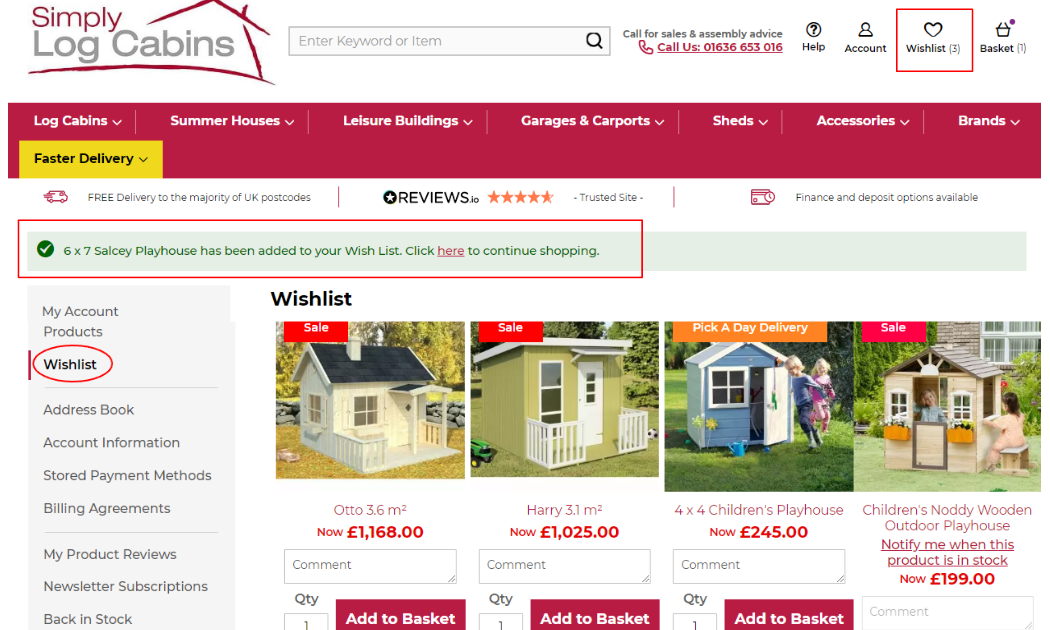
Suppose you see a particular product, like these outdoor wooden playhouses, frequently added to wish lists, you can use this information to create targeted promotions or special offers, like limited-time discounts, until your potential customers complete their purchases from their carts.
9. Encourage Customers To Set Their Email Preferences
If customers receive emails about the products or services they care about, they are more likely to open them and click on links. This makes your email campaigns more successful because your content is relevant to them, and they are less likely to unsubscribe.
How To Do It
Use a friendly pop-up on your website that asks customers to set their email preferences. Make sure they can choose the types of emails they want, like promotions or newsletters, and how often they receive them (daily, weekly, monthly).
Once you have the data, you can now offer monthly deals or product updates that suit their interest. From there, you can strategically send promotions like “New Arrivals” and “Exclusive Offers” without spamming their inboxes.
Conclusion
Now that you’ve got the lowdown on zero party data strategy, it’s time to think about how you can put these insights to work. Start to gather key preferences directly from your audience and use that data to personalize your marketing strategy. Creating quizzes is a great start.
To make the most of your zero-party data, check out Byteplant’s data validation solution. Our platform lets you validate phone numbers, emails, and postal addresses to reduce bounce rates and make sure that your marketing efforts reach the right, targeted people.
Want to see a live demo? Get in touch with us here or try our free trial today.
 Burkhard Berger is the founder of Novum™. He helps innovative B2B companies implement modern SEO strategies to scale their organic traffic to 1,000,000+ visitors per month. Curious about what your true traffic potential is?
Burkhard Berger is the founder of Novum™. He helps innovative B2B companies implement modern SEO strategies to scale their organic traffic to 1,000,000+ visitors per month. Curious about what your true traffic potential is?
